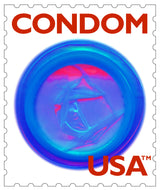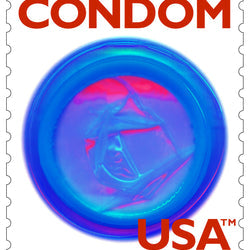Pre-Exposure Prophylaxis (PrEP) to Prevent HIV Infection: Questions and Answers
In July 2012 the U.S. Food and Drug Administration (FDA) approved the first use of an antiretroviral drug to prevent HIV infection. Truvada, a combination of two HIV medications, can now be used by persons who are HIV-negative to protect them from possible infection.
The following questions and answers are meant to educate consumers on PrEP and whether it is right for them.
What is Pre-Exposure Prophylaxis (PrEP)?
A prophylactic is a drug you take to prevent disease. When you take a drug to prevent HIV infection, it is called HIV prophylaxis.
With Post-Exposure Prophylaxis (PEP), you take an HIV medication immediately after the exposure to HIV to prevent infection. With PrEP, if you are HIV-negative, you take Truvada before possible exposure to HIV to prevent infection.
Truvada is a combination of the drugs Emtriva and Viread. It was originally approved for treatment in 2004.
What does the new FDA approval of PrEP mean?
Recent research studies confirmed that Truvada safely and effectively prevented HIV infection among HIV-negative men who have sex with men (MSM) and transgender women who have sex with men. Both groups were considered to be at high risk of infection. Based on the research findings, the FDA approved the use of PrEP for these two groups.
Further research found that Truvada is also safe and effective at preventing HIV infection among heterosexual men and women. These includeserodiscordant couples, where one partner is HIV-positive and the other is HIV-negative. In July 2012, the FDA approved the use of PrEP for sexually active heterosexual men and women.
The U.S. Public Health Service will soon issue complete guidelines on the use of PrEP. In the meantime, providers should rely on the CDC “interim guidance” for prescribing PrEP (see link below).
Why did the FDA approve an HIV drug for people who don't have HIV?
HIV medications and better medical care have helped many HIV-positive people regain their health, so that fewer people are progressing to AIDS and dying. However, nearly 50,000 people in the U.S. still get infected with HIV each year. Because the number of new infections has stayed constant in recent years, public health officials are looking for new and different ways to prevent infection.
Using a preventive medication before exposure to a virus is not new. For example, people who travel to countries where malaria is a problem often take medications beforehand to protect them from being infected by mosquitos.
What are the guidelines/requirements for providers to prescribe PrEP?
- You must be HIV-negative.
- You cannot have "flu-like" symptoms, which may indicate you have acute HIV phase, the earliest stage of infection.
- Practice other forms of risk-reduction: use condoms; get tested for HIV regularly; don't share drug injection equipment; get risk-reduction counseling; and get screened for STDs and hepatitis B.
- Stick to your HIV medication schedule. Take all your meds on time, as prescribed. Very few participants in the PrEP clinical trials developed resistance to the medications, even if they became infected with HIV. The researchers concluded that, if HIV-negative patients are monitored closely, the benefits of PrEP outweighed the risks connected with drug resistance.
How will my healthcare provider decide whether PrEP is right for me?
This will depend on a number of factors:
If you are an MSM
Your healthcare provider must first confirm that you are HIV-negative and that you have no current (flu-like) symptoms of acute HIV. Your provider will also test you for hepatitis B infection, for STDs, and for kidney function.
Your provider has to conclude that you are at ongoing, high risk for HIV infection because of behaviors such as unprotected sex, needle sharing, or drug and alcohol use. Your provider will also consider how well you can stick with a PrEP medication schedule despite your risk behaviors.
If you are a heterosexual male or female
If you are a sexually active heterosexual adult who is HIV-negative, your provider can prescribe PrEP if you are at “very high risk” of getting HIV from penile-vaginal sex. This situation may occur if your partner is HIV-positive. Again, PrEP must be part of a larger effort to prevent HIV transmission. Your provider will talk to you about reducing your risk of infection, getting tested and treated for STDs, and taking your PrEP medications as prescribed.
Does PrEP have significant side effects?
The main side effects felt by the patients in the PrEP clinical trials were mild nausea and problems with kidney function. Everyone who takes PrEP should see their medical provider for kidney function tests every six months
Is PrEP safe for pregnant or breastfeeding women?
Pregnant and breastfeeding women were not included in the PrEP research studies - so the safety and efficacy of Truvada for pregnant women and fetuses/infants has not been established. Women of child-bearing age should have a pregnancy test before beginning PrEP and at regular intervals while taking PrEP. If you are pregnant before starting PrEP or want to become pregnant while taking PrEP, talk with your healthcare provider about the risks and benefits.
The two drugs contained in Truvada have been used safely and effectively to prevent HIV transmission from mother to child - there was no harm to infants exposed to PrEP.
How much does PrEP cost? Is it covered by insurance?
Truvada, the PrEP drug, costs between $8,000 and $14,000 per year. You will also have to figure in the cost of four medical check-ups annually and possible lab tests. Check with your medical insurer to see if PrEP is covered.Read more here>>>








Leave a comment